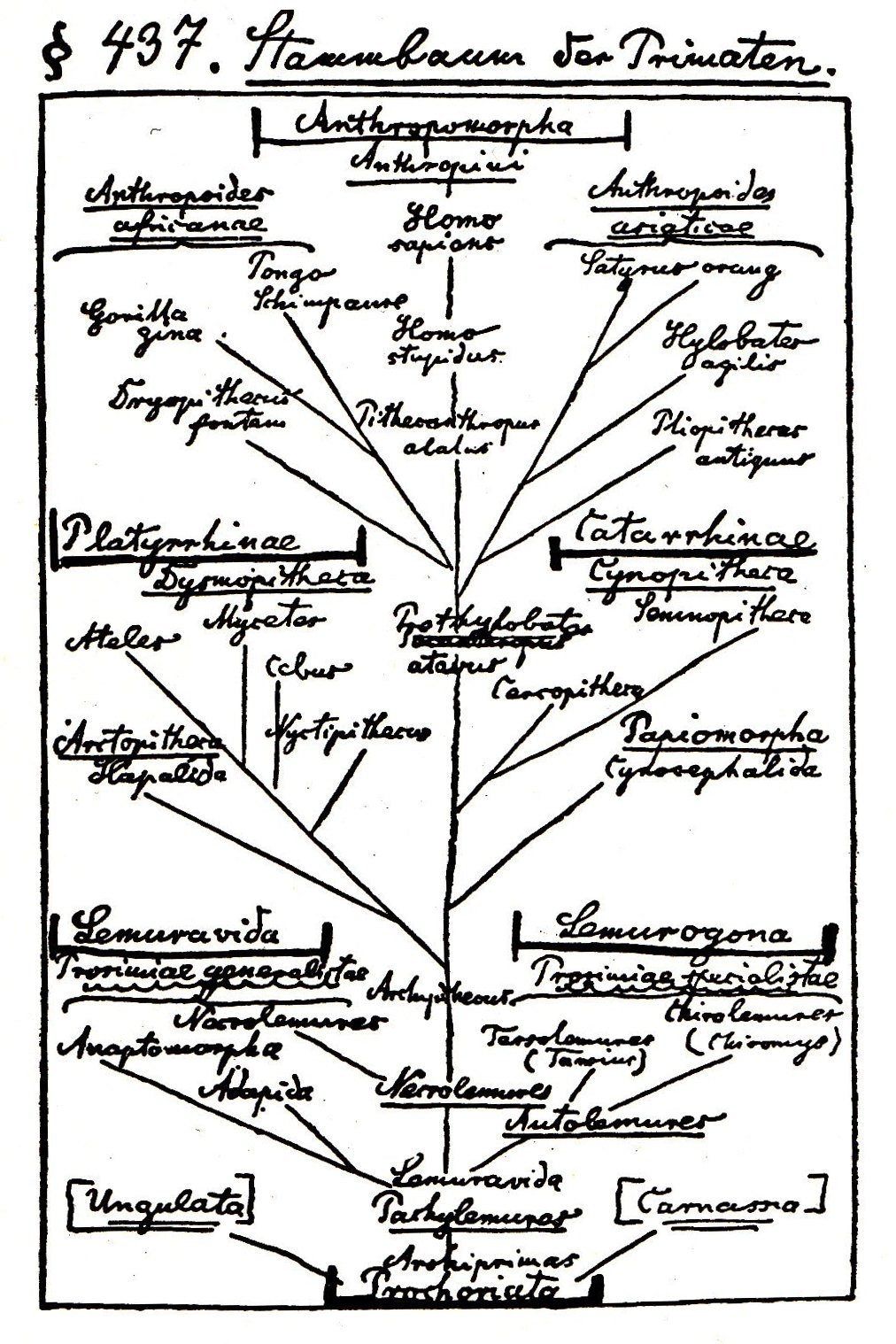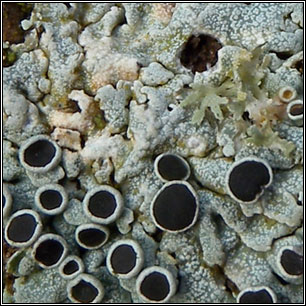| Blogs | NoHits |
| http://google-opensource.blogspot.com | 82300 |
| http://www.programmingr.com | 73500 |
| http://googleresearch.blogspot.com | 58000 |
| http://dirk.eddelbuettel.com | 53000 |
| http://borasky-research.net | 33100 |
| http://casoilresource.lawr.ucdavis.edu | 32500 |
| http://andrewgelman.com | 30000 |
| http://yihui.name | 29600 |
| http://xianblog.wordpress.com | 27900 |
| http://nsaunders.wordpress.com | 27600 |
| http://chem-bla-ics.blogspot.com | 26600 |
| http://plindenbaum.blogspot.com | 24600 |
| http://blog.ouseful.info | 24300 |
| http://www.vcasmo.com | 24200 |
| http://yz.mit.edu | 23500 |
| http://romainfrancois.blog.free.fr | 22700 |
| http://blog.revolutionanalytics.com | 21000 |
| http://robjhyndman.com | 18400 |
| http://freakonometrics.blog.free.fr | 16100 |
| http://perfdynamics.blogspot.com | 15400 |
| http://www.stubbornmule.net | 14800 |
| http://zoonek.free.fr | 14800 |
| http://jackman.stanford.edu | 13900 |
| http://www.bytemining.com | 13700 |
| http://learnr.wordpress.com | 12600 |
| http://tommy.chheng.com | 12200 |
| http://mazamascience.com | 12000 |
| http://www.investuotojas.eu | 11500 |
| http://www.r-statistics.com | 11300 |
| http://www.franklincenterhq.org | 10800 |
| http://gettinggeneticsdone.blogspot.com | 10700 |
| http://mpastell.com | 9930 |
| http://pineda-krch.com | 9780 |
| http://blog.saush.com | 9220 |
| http://www.premiersoccerstats.com | 8950 |
| http://developmentality.wordpress.com | 7250 |
| http://www.dataspora.com | 7200 |
| http://blog.hiremebecauseimsmart.com | 7050 |
| http://isomorphismes.tumblr.com | 7040 |
| http://www.mathfinance.cn | 6930 |
| http://blog.nguyenvq.com | 6150 |
| http://www.drewconway.com | 5970 |
| http://www.carlboettiger.info | 5520 |
| http://www.statisticsblog.com | 5110 |
| http://www.decisionsciencenews.com | 4950 |
| http://www.r-chart.com | 4810 |
| http://chartsgraphs.wordpress.com | 4480 |
| http://www.portfolioprobe.com | 4410 |
| http://procomun.wordpress.com | 4330 |
| http://jeromyanglim.blogspot.com | 4080 |
| http://spatialanalysis.co.uk | 4080 |
| http://www.theresearchkitchen.com | 4080 |
| http://www.forex-bloggers.com | 4070 |
| https://www.rmetrics.org | 4050 |
| http://princeofslides.blogspot.com | 3900 |
| http://www.cybaea.net | 3740 |
| http://www.cerebralmastication.com | 3710 |
| http://ygc.name | 3670 |
| http://ryouready.wordpress.com | 3450 |
| http://jeffreybreen.wordpress.com | 3410 |
| http://systematicinvestor.wordpress.com | 3400 |
| http://sgsong.blogspot.com | 3310 |
| http://industrialengineertools.blogspot.com | 3290 |
| http://www.r-tutor.com | 3270 |
| http://fishlab.ucdavis.edu | 3270 |
| http://ggorjan.blogspot.com | 3250 |
| http://blog.ynada.com | 3220 |
| http://farmacokratia.blogspot.com | 3170 |
| http://4dpiecharts.com | 3130 |
| http://heuristically.wordpress.com | 3040 |
| http://blog.rtwilson.com | 2910 |
| http://www.wekaleamstudios.co.uk | 2890 |
| http://www.dataists.com | 2840 |
| http://ikanb.wordpress.com | 2750 |
| http://shape-of-code.coding-guidelines.com | 2730 |
| http://onertipaday.blogspot.com | 2710 |
| http://blog.fosstrading.com | 2700 |
| http://blog.echen.me | 2690 |
| http://www.theusrus.de | 2670 |
| http://cloudnumbers.com | 2630 |
| http://paulbutler.org | 2620 |
| http://biostatmatt.com | 2460 |
| http://www.johnmyleswhite.com | 2430 |
| http://dataninja.wordpress.com | 2360 |
| http://realizationsinbiostatistics.blogspot.com | 2340 |
| http://statisfaction.wordpress.com | 2300 |
| http://uxblog.idvsolutions.com | 2250 |
| http://timelyportfolio.blogspot.com | 2210 |
| http://radfordneal.wordpress.com | 2200 |
| http://sas-and-r.blogspot.com | 2200 |
| http://pairach.com | 2110 |
| http://yusung.blogspot.com | 2050 |
| http://blog.flacso.edu.mx | 2010 |
| http://www.rensenieuwenhuis.nl | 2000 |
| http://michaeldhealy.com | 1990 |
| http://freigeist.devmag.net | 1950 |
| http://www.fernandohrosa.com.br | 1920 |
| http://statbandit.wordpress.com | 1870 |
| http://www.win-vector.com | 1840 |
| http://lukemiller.org | 1830 |
| http://ropensci.org | 1720 |
| http://www.eggwall.com | 1650 |
| http://benmazzotta.wordpress.com | 1620 |
| http://bms.zeugner.eu | 1610 |
| http://cartesianfaith.wordpress.com | 1580 |
| http://linkedscience.org | 1570 |
| http://stevemosher.wordpress.com | 1550 |
| http://intelligenttradingtech.blogspot.com | 1520 |
| http://www.imachordata.com | 1480 |
| http://blog.diegovalle.net | 1470 |
| http://jermdemo.blogspot.com | 1430 |
| http://nortalktoowise.com | 1420 |
| http://ekonometrics.blogspot.com | 1340 |
| http://digitheadslabnotebook.blogspot.com | 1320 |
| http://flyordie.sin.khk.be | 1310 |
| http://schamberlain.github.com | 1230 |
| http://gribblelab.org | 1180 |
| http://www.quantf.com | 1130 |
| http://offensivepolitics.net | 1020 |
| http://www.markmfredrickson.com | 981 |
| http://blog.mckuhn.de | 948 |
| http://erehweb.wordpress.com | 889 |
| http://confounding.net | 886 |
| http://simplystatistics.tumblr.com | 875 |
| http://www.babelgraph.org | 859 |
| http://csgillespie.wordpress.com | 857 |
| http://joewheatley.net | 844 |
| http://helmingstay.blogspot.com | 843 |
| http://theaverageinvestor.wordpress.com | 825 |
| http://quantitative-ecology.blogspot.com | 785 |
| http://zvfak.blogspot.com | 776 |
| http://ucfagls.wordpress.com | 766 |
| http://opendatagroup.com | 760 |
| http://cameron.bracken.bz | 740 |
| http://rtutorialseries.blogspot.com | 738 |
| http://opencpu.org | 708 |
| http://novicemetrics.blogspot.com | 700 |
| http://lamages.blogspot.com | 680 |
| http://nir-quimiometria.blogspot.com | 679 |
| http://tonybreyal.wordpress.com | 677 |
| http://brokeringclosure.wordpress.com | 658 |
| http://socialdatablog.com | 643 |
| http://dancingeconomist.blogspot.com | 629 |
| http://www.rtexttools.com | 603 |
| http://danganothererror.wordpress.com | 589 |
| http://thebiobucket.blogspot.com | 567 |
| http://holtmeier.de | 531 |
| http://val-systems.blogspot.com | 519 |
| http://thelogcabin.wordpress.com | 489 |
| http://dcemri.blogspot.com | 484 |
| http://rdatamining.wordpress.com | 477 |
| http://bridgewater.wordpress.com | 460 |
| http://www.rcasts.com | 444 |
| http://dsparks.wordpress.com | 436 |
| http://pr.cloudst.at | 422 |
| http://polstat.org | 409 |
| http://www.compmath.com | 401 |
| http://techno-realism.blogspot.com | 399 |
| http://www.backsidesmack.com | 395 |
| http://geotheory.org | 393 |
| http://miraisolutions.wordpress.com | 367 |
| http://econometricsense.blogspot.com | 352 |
| http://blog.binfalse.de | 344 |
| http://rforcancer.drupalgardens.com | 317 |
| http://blog.rstudio.org | 316 |
| http://mcfromnz.wordpress.com | 309 |
| http://www.quantumforest.com | 309 |
| http://blog.quanttrader.org | 303 |
| http://chrisladroue.com | 293 |
| http://www.michaelbommarito.com | 289 |
| http://procrun.com | 280 |
| http://mikeksmith.posterous.com | 279 |
| http://bio7.org | 278 |
| http://kbroman.wordpress.com | 278 |
| http://martynplummer.wordpress.com | 272 |
| http://bryer.org | 268 |
| http://www.funjackals.com | 265 |
| http://www.harlan.harris.name | 252 |
| http://www.milktrader.net | 248 |
| http://www.surefoss.org | 241 |
| http://rigorousanalytics.blogspot.com | 231 |
| http://www.jameskeirstead.ca | 229 |
| http://programming-r-pro-bro.blogspot.com | 225 |
| http://plausibel.blogspot.com | 224 |
| http://statistic-on-air.blogspot.com | 217 |
| http://mintgene.wordpress.com | 212 |
| http://moderntoolmaking.blogspot.com | 205 |
| http://quantitativeecology.blogspot.com | 199 |
| http://www.sigmafield.org | 199 |
| http://www.ancienteco.com | 194 |
| http://worldofrcraft.blogspot.com | 191 |
| http://rappster.wordpress.com | 190 |
| http://stotastic.com | 189 |
| http://evolvingspaces.blogspot.com | 184 |
| http://strugglingthroughproblems.blogspot.com | 166 |
| http://sharpstatistics.co.uk | 161 |
| http://leftcensored.skepsi.net | 160 |
| http://omegahat.wordpress.com | 156 |
| http://drunks-and-lampposts.com | 155 |
| http://amathew.com | 152 |
| http://onlinelabor.blogspot.com | 147 |
| http://johnramey.net | 144 |
| http://gossetsstudent.wordpress.com | 138 |
| http://tomhopper.wordpress.com | 135 |
| http://ggobi.blogspot.com | 134 |
| http://blog.fellstat.com | 131 |
| http://www.openanalytics.eu | 130 |
| http://www.numbertheory.nl | 127 |
| http://stats.blogoverflow.com | 127 |
| http://the-praise-of-insects.blogspot.com | 122 |
| http://lpenz.github.com | 118 |
| http://christophergandrud.blogspot.com | 118 |
| http://f.giorlando.org | 112 |
| http://bayesianbiologist.com | 110 |
| http://www.graphoftheweek.org | 109 |
| http://oneliner.soma20.com | 109 |
| http://inundata.org | 107 |
| http://geokook.wordpress.com | 104 |
| http://blog.datapunks.com | 102 |
| http://eranraviv.com | 102 |
| http://eranraviv.com | 102 |
| http://www.compbiome.com | 101 |
| http://www.techpolicy.ca | 99 |
| http://www.psychwire.co.uk | 97 |
| http://blog.carlislerainey.com | 93 |
| http://vasishth-statistics.blogspot.com | 93 |
| http://www.statsravingmad.com | 93 |
| http://using-r-project.blogspot.com | 93 |
| http://www.nikhilgopal.com | 92 |
| http://thedatamonkey.blogspot.com | 92 |
| http://jeffreyhorner.tumblr.com | 90 |
| http://menugget.blogspot.com | 88 |
| http://www.twotorials.com | 88 |
| http://dataexcursions.wordpress.com | 84 |
| http://viksalgorithms.blogspot.com | 83 |
| http://exploringdatablog.blogspot.com | 81 |
| http://sachaepskamp.com | 81 |
| http://aphysicistinwallstreet.blogspot.com | 77 |
| http://lastresortsoftware.blogspot.com | 75 |
| http://www.nomad.priv.at | 72 |
| http://applyr.blogspot.com | 71 |
| http://www.knowledgediscovery.jp | 71 |
| http://weitaiyun.blogspot.com | 71 |
| http://xmphforex.wordpress.com | 71 |
| http://statsadventure.blogspot.com | 70 |
| http://davenportspatialanalytics.squarespace.com | 70 |
| http://anandram.wordpress.com | 69 |
| http://rpint.wordpress.com | 68 |
| http://datadebrief.blogspot.com | 66 |
| http://blog.cloudstat.org | 64 |
| http://www.r-podcast.org | 64 |
| http://rmkrug.wordpress.com | 62 |
| http://denishaine.wordpress.com | 61 |
| http://expansed.com | 58 |
| http://r.andrewredd.us | 57 |
| http://isseing333.blogspot.com | 57 |
| http://solomonmessing.wordpress.com | 57 |
| http://rtricks.wordpress.com | 57 |
| http://anrprogrammer.wordpress.com | 56 |
| http://arungaikwad.wordpress.com | 56 |
| http://geolabs.wordpress.com | 55 |
| http://lookingatdata.blogspot.com | 55 |
| http://factbased.blogspot.com | 54 |
| http://severity.blogspot.com | 54 |
| http://swordofcrom.wordpress.com | 53 |
| http://librestats.wordpress.com | 51 |
| http://marcinkula.wordpress.com | 51 |
| http://gsoc2010r.wordpress.com | 47 |
| http://psyccomputing.blogspot.com | 46 |
| http://fabiomarroni.wordpress.com | 45 |
| http://jedifran.com | 45 |
| http://alstatr.blogspot.com | 43 |
| http://r-video-tutorial.blogspot.com | 42 |
| http://alexfarquhar.posterous.com | 40 |
| http://bmb-common.blogspot.com | 40 |
| http://rdataviz.wordpress.com | 40 |
| http://mypapertrades.blogspot.com | 38 |
| http://pitchrx.blogspot.com | 38 |
| http://simonmueller.net | 38 |
| http://statisfactions.wordpress.com | 37 |
| http://nzprimarysectortrade.wordpress.com | 36 |
| http://seanmulcahy.blogspot.com | 36 |
| http://www.speakingstatistically.com | 35 |
| http://joshpaulson.wordpress.com | 34 |
| http://learningrbasic.blogspot.com | 34 |
| http://mockquant.blogspot.com | 33 |
| http://costaleconomist.blogspot.com | 32 |
| http://rsnippets.blogspot.com | 31 |
| http://statmethods.wordpress.com | 29 |
| http://aviadklein.wordpress.com | 28 |
| http://obeautifulcode.com | 28 |
| http://blog.cloudst.at | 24 |
| http://rstats.posterous.com | 23 |
| http://notebookonthewebs.tumblr.com | 22 |
| http://0utlier.blogspot.com | 21 |
| http://gjkerns.github.com | 21 |
| http://eigensomething.blogspot.com | 10 |
| http://brocktibert.wordpress.com | 9 |
| http://toddjobe.blogspot.com | 9 |
| http://mickeymousemodels.blogspot.com | 9 |
| http://forgetfulfunctor.blogspot.com | 9 |
| http://rocknrblog.wordpress.com | 9 |
| http://dmbates.blogspot.com | 8 |
| http://blog.nextbiomotif.com | 8 |
| http://indiacrunchin.wordpress.com | 8 |
| http://blog.trenthauck.com | 8 |
| http://mikescnc.blogspot.com | 8 |
| http://jeroldhaas.blogspot.com | 8 |
| http://tlevine.tumblr.com | 8 |
| http://empty-moon-9726.heroku.com | 8 |
| http://www.proc-x.com | 7 |
| http://jointposterior.blogspot.com | 7 |
| http://gastonsanchez.wordpress.com | 7 |
| http://mlt-thinks.blogspot.com | 7 |
| http://rstats.wordpress.com | 7 |
| http://playingwithr.blogspot.com | 7 |
| http://scottmutchler.blogspot.com | 6 |
| http://iamdata.wordpress.com | 6 |
| http://sfchaos.blogspot.com | 6 |
| http://nightlordtw.wordpress.com | 5 |
| http://pleasepasstheroc.blogspot.com | 5 |
| http://wiekvoet.blogspot.com | 5 |
| http://d7.stattler.com | 4 |
| http://yetanotherrblog.blogspot.com | 4 |
| http://blog.iwanluijks.nl:80 | 3 |
| https://rlearner.wordpress.com | 3 |
| http://margintale.blogspot.com | 1 |




















